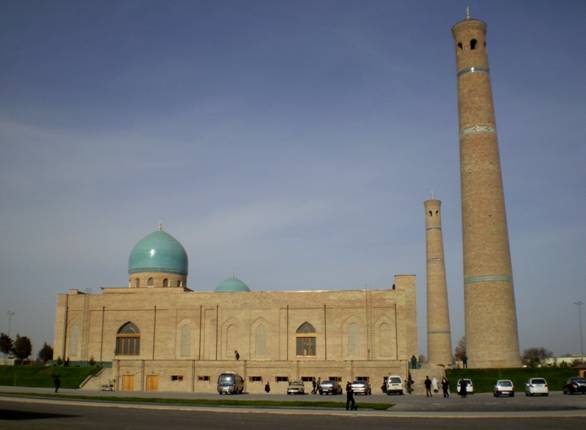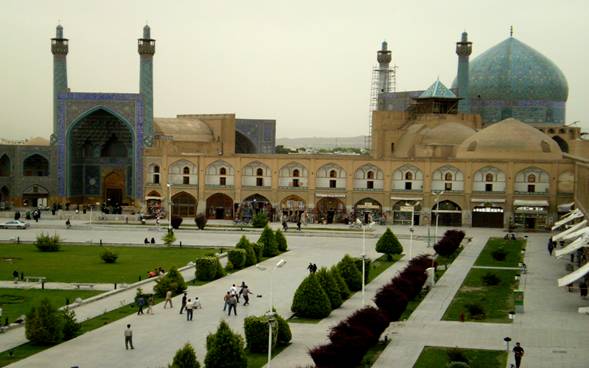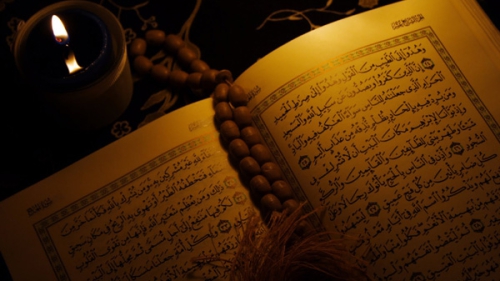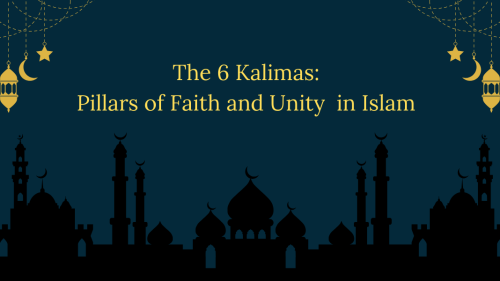Islam's Universality and Islamic Architecture

Since there is only one God, Allah, there must be only one Truth. There cannot be two or more Truths, just as cannot be two or more Gods. Moreover, just as people came from the same origin, are subjected to the same laws of existence and march towards the same destination, it is only sensible that they should possess only one vision and mission when in this world and that they are subjected to the same spiritual and ethical tenets, guiding principles and rules. It is because of this verity that every prophet from Adam to Muhammad (peace be upon them all) was appointed to fulfill the same purpose. They had to convey the same message to their respective nations and communities, that is, the message of tawhid, the Oneness of Allah who alone deserves to be glorified and worshipped. "Not a messenger did We send before you without this inspiration sent by Us to him: that there is no god but I; therefore worship and serve me." (al-Anbiya', 21:25)
The only religion before Allah is Islam (Alu 'Imran, 3:19). The rest is error and delusion, being either the distorted versions of Islam revealed at some points of history to some of Allah's messengers, or the belief systems and ideologies which men, now and then, have invented in full absence of the direct influences of revelation and prophets. In either of these two cases, people are false to their own nature and the reasoning strength of theirs, as they are false to Allah's will and plan. "If anyone desires a religion other than Islam (submission to Allah) never will it be accepted of him; and in the Hereafter he will be in the ranks of those who have lost." (Alu 'Imran, 3:85)
Thus, Islam is the first and last revelation from Allah. All the prophets before Prophet Muhammad (peace be upon them all) while preaching the same message operated in single historical episodes until the emergence of their successors, succeeding each other and reviving each other's traditions and legacies, and complementing them, until Muhammad (pbuh) was sent as the seal of prophets whose message was meant to be valid for all times till the end of this terrestrial life. Likewise, all the prophets before Muhammad were sent only to their respective nations and communities, operating in certain geographical regions, until Muhammad was sent to the whole of mankind, thus completing the heavenly cycle which commenced with the creation of the first man and prophet on earth, Adam.
 |
| The skyline of the city of Khiva, Uzbekistan. |
By virtue of being the last prophet, and the message revealed to him the final revelation, the mission of Prophet Muhammad (pbuh) is characterized by a number of unique features. Some of those features are as follows.
Prophet Muhammad's message is a universal and permanent one not affected by the implications of the time and space factors. Besides, not only is it meant for all people till the end of time, but also for Jinns. This necessitated that the Qur'an be meticulously guarded against being lost, misunderstood, interpolated or distorted, which unfortunately was not the fate of previous revealed scriptures. The one in charge of preserving the Qur'an is Allah Himself, as He explicitly vowed in the Qur'an. Since the Sunnah, Prophet Muhammad's words and actions, constitutes the second source of Islam, whose primary task is to interpret, elucidate and complement the Qur'an, it is also a form of revelation. It, too, had to be preserved against misinterpretations, interpolations, distortions and loss, which unfortunately was not the fate of the life stories of previous prophets.
As the seal of prophets, Prophet Muhammad's task was not only to look at the present as well as the future, and to chart the courses for people's moral and spiritual fulfillment. It was also to look back at the past where the tawhidic schemes of other prophets have been corrupted and tampered with, setting the things right and occasionally naming the culprits. That way, the struggles, achievements and legacies of prophets, their followers and whoever wished and contributed any good to the spiritual and civilizational enrichment of mankind have been duly recognized and endorsed. At the same time, the falsehood and deceptive plots of the opponents of prophets and Truth were emphatically exposed and rebutted.
 |
| Hazrati Imam Jome Mosque in Tashkent, Uzbekistan. |
Thus, the direction and tone of the last Allah's revelation to man were clearly set. The chief objectives of the final Prophet's mission were also clearly spelled out. According to such objectives, the last Prophet (pbuh) was as much a reformer as an originator. He was as much concerned about the present and future as about the past. He came as much to initiate the new systems of living as to Islamize the existing but flawed ones. Even though he laid a foundation for a new divinely inspired and universal civilization, he never failed to appreciate the virtuous aspects of the existing cultures and civilizations which he had come into contact with. Although he resolutely repudiated the immoral and corrupt aspects of those existing cultures and civilizations, he, whenever needed, never failed to avail himself of their constructive and affirmative contributions to the good of mankind. This was possible due to Islam's recognition that every community is capable of making a contribution to the wellbeing of human society. The basis for such contributions could be either some remnants of a past prophet's wisdom and experiences, which the people may or may not be aware of, or the human reasoning power supported by the human unadulterated primordial nature which Allah has bestowed upon man as an eternal heavenly gift. And finally, Prophet Muhammad (pbuh) was an Arab operating within an Arab context, but his teachings and guidance were meant for all people irrespective of their race, country, origins and background.
Prophet Muhammad (pbuh) thus stands for a microcosm of the prophethood phenomenon and all its protagonists. It is because of this that at the core of the Islamic faith is believing in all prophets and the holy books revealed to them. Rejecting a prophet or a revealed book renders a person a nonbeliever. It is because of this, furthermore, that fundamental to the Islamic message are the notions of Muslim brotherhood, the unity of mankind, mutual understanding and respect, dialogue, tolerance, benevolence, moderation, comprehensive excellence and erudition.
 |
| The city of Sivas, Turkey. |
Allah says: ""We sent you not, but as a mercy for all creatures." (Al-Anbiya', 21:107)
"We have, without doubt, sent down the Message; and We will assuredly guard it (from corruption)." (Al-Hijr, 15:9)
"We have not sent you but as a (Messenger) to all mankind, giving them glad tidings, and warning them (against sin), but most men know not." (Saba', 34:28)
"Muhammad is not the father of any man among you, but he is the messenger of Allah and the Seal of the Prophets; and Allah is ever Aware of all things." (Al-Ahzab, 33:40)
The implications of Islam as the final and universal revelation for Islamic architecture
The implications of the notion that Islam is the final and universal revelation for Islamic architecture are at once conceptual and practical. Due to the fact that the religion of Islam is universal, the architecture of its peoples, which functions as a framework for their Islamic lifestyles, is universal too. Indeed, universal is every segment of Islamic eclectic civilization of which Islamic architecture is an integral part.
Once revealed to Prophet Muhammad (pbuh), the principal and most immediate concern of Islam was not building pursuits as such. Islam and Muslims felt that the most pressing issue was to correct people's perception of God, life and death, the world, nature, culture, civilization and man: his role and position on earth, for if these are perverted, people's perception of and approach to building would be perverted and corrupted as well. Similarly, if these themes are properly grasped and honored, people's perception of and approach to building would be appropriate and inspired as well. For this reason, for example, does the Qur'an speak not only about faith but also about building and development when referring to some of the ancient civilizations, such as that of the 'Ad, Thamud, Pharaohs and the children of Israel. The Qur'an thus wishes to explicate some of the detriments that human society is bound to put up with on the physical plane of civilization as soon as the divinely prescribed worldview and morals are forsaken and other alternatives become pursued instead.
 |
| The Shah Mosque as part of the Shah Square in Isfahan, Iran. |
The message meant to be thus communicated is that the major and most urgent task of the followers of Islam is to strive to understand, accept as true, apply and further advance the message of Islam by all the rightful means. However, as for the building systems, styles and techniques that they meanwhile may evolve, as part of life's essential affairs, it at the end of the day does not really matter what they shall be as long as they stem from the body of Islamic teachings and norms, conform to the tawhidic worldview and are subjected to the realization of the objectives that man is bidden to accomplish on earth. By the same token, it does not matter whether such systems, styles and techniques are developed solely by Muslims or, after having been duly refined and corrected, are totally or partly imported from other cultures and civilizations. In other words, Muslims are advised to attend to the root causes pertinent to the actualization and translation of the word of God in life. This will gradually, but inevitably, lead to the desired goals pertinent to the creation of Islamic cultures and civilization with all their dimensions and segments, including art and architecture, for the latter is both the ground and framework for the former's realization.
Just like the religion of Islam, Islamic architecture is not confined to an ethnic group, historic episode or a geographical region. It is not governed by a restricted perception or an outlook, nor is it locked up in a style and a set of rigid methods and techniques. Islamic architecture is fluid, flexible and open to all peoples to enrich its infinite orb through their various styles, methods and techniques, and then together to wallow in its spiritual grandeur and enjoy its manifold benefits and advantages. Islamic architecture is a global phenomenon with an outlook that not only makes use of, but also transcends the experiences and ideas of this world. It is a phenomenon with a universal appeal and meaning. It is a product of interplay between the absolute, or permanent, and the relative, or transient, realities, i.e., between the Islamic principles and beliefs that give Islamic architecture its quintessence, and those temporal elements and constituents that give it its ephemeral form. Islamic architecture is a symbiosis between a global religion and life in its totality. It is a union between the material and spiritual spheres, and between the heavens and the earth. Islamic architecture cherishes its perpetual heavenly spirit and identity, never compromising them. At the same time, however, it is ever ready to welcome any contribution by anyone -- even non-Muslims -- so that the former is made even more conspicuous and exalted, and its impact further augmented.
 |
| An elaborately decorated screen on the roof of a house in Cairo, Egypt. In the background is the mosque of Ahmad b. Tulun. |
That is why while spreading Islam to the world, Muslims never hesitated to avail themselves of the existing built environments. The only thing that needed their most immediate attention and so correction were those aspects of architecture that were closely associated with faithlessness and polytheism. With the processes of Islamizing people's minds, attitudes and systems of living, another process, that of Islamizing architecture, went concurrently on, albeit with less dynamism and less dramatic effects as the former. This was so because once the former in its capacity as a cause took place, the latter in its capacity as an effect instinctively came to pass. In doing so, the existing indigenous building styles, technologies and engineering were not only fully respected, but also adopted as the best way for conducting building activities now under the aegis of Islam and Muslims. As a result, local building materials, expertise and craftsmen were widely employed.
Such was utterly a natural course of action and fully in line with the nature of Islam and its mission. By no means is it fair to accuse, especially the first Muslims, of blindly borrowing from, or imitating, others while embarking on building activities, in the sense that they failed or, at best, were embarrassingly slow in initiating some completely novel and unprecedented styles in architecture. In contrast, it would be strange, embarrassing and repressive if Muslims upon subjecting a territory to the authority of Islam set out to annul and eradicate those indigenous traditions and life systems that people evolved over centuries as most effective in their living conditions and which did not oppose any of the Islamic standards and norms. Hence, such traditions and life systems were kept intact. In demonstrating this Islamic principle, while settling themselves in newly conquered territories Muslims went so far as to reclaim and convert a number of churches and temples into mosques with minimal or no significant structural alterations, and employ non-Muslims in their own building initiatives. Indeed, the whole thing of integrating other people's contributions while evolving the identity of Islamic architecture is rather to be understood as witnessing the Islamic concepts of universality, finality of Prophet Muhammad's message and unity in diversity, being at work and producing some tangible results, while fully conforming to the dictates of the normative Islamization code. As Titus Burckhardt remarked that "art never creates ex nihilo (from nothingness). Its originality lies in the synthesis of pre-existing elements. Thus, the sacred architecture of Islam was born on the day when success was achieved in creating, not new forms of pillars and arches, but a new kind of space conformable to Islamic worship."
 |
| A traditional residential area in Ghadamis, Libya. |
It is true that in terms of architecture Muslims were by far inferior to their Persian and Byzantine counterparts in the newly acquired territories. However, to compete with and eventually overshadow them in that regard was not on the list of the immediate priorities of Muslims. What was on the list was how to conquer people's hearts and minds with the new Islamic spirit which, in turn, will trigger subjecting the existing architecture to the new living paradigm. Once infused with the new life-force, the same architecture was bound to be elevated to new levels starting from where it already was. And that is exactly what soon came to pass. Other people's indigenous architectural legacies, once purified, if such was necessary, were seen as an asset and not a liability, as a help and not an obstruction. They were used as a vehicle for expressing the true nature of Islamic architecture. Hence, apart from identifying the genuine architecture of Muslims as "Islamic", it is also appropriate to add an indication of a geographical region or an ethnic group that added an extra flavor to what Islamic architecture actually is. Hence, it can rightly be said "Islamic Umayyad architecture", "Islamic Abbasid architecture", "Islamic Turkish architecture", "Islamic Iranian architecture", "Islamic Malay architecture", etc. In this type of appellation, the notion of universalism in Islamic architecture is not meant to be downgraded or violated. On the contrary, it is duly acknowledged and highlighted. The Islamic idea of unity in diversity is clearly spelled out too. There is no architectural expression or style which is firstly indigenous and secondly Islamic. Islam is Islamic architecture's soul. It is its identity. Indigenous components can have no more than a qualified bearing on dictating and shaping the form of Islamic architecture, whereas its essence remains forever the same. Even though limited, the influence of indigenous components in Islamic architecture is still overseen by and is fully submissive to the Islamic ideology.
Finally, while dwelling on the theme of the birth of Islamic art and architecture, many scholars' line of discussion is such that it excessively focuses on the geographical, socio-political and cultural aspects, to the point where one feels that the real character of Islamic art and architecture is being rather localized, privatized, downgraded and even de-spiritualized. When one reads what those scholars have written, one almost gets an impression that it was -- for example -- the Umayyads, the Abbasids, the Saljuqs or the Mughals, who were in total charge of Islam and who independently and freely charted the growth if its art and architecture, and not the other way round, that is, Islam was in charge of its peoples: their mentality, traditions and aspirations. It was their point of reference, whereas the ruling Muslim dynasties and the leading socio-political protagonists were no more than the instruments and trustees entrusted with the spread and implementation of the Islamic message on the world scene.
To Muslims, there is nothing more superior and more significant than Islam. Islam is their greatest thing. It is the beginning and end of every Muslim ambition and endeavor. Islam did not come to be inferior or subservient to any person, group or idea. It did not serve the interests of the Umayyads, the Abbasids, the Saljuqs, the Mughals, or any other dynasty or regime. Regardless of how they became the rulers of the Muslim community, the predominant task of those dynasties and regimes was to serve the goals and interests of Islam and Muslims. Against the backdrop of this precept alone are the legacies of Muslim dynasties to be viewed and judged. Surely, if there was no Islam, there would not have been the Umayyad, the Abbasid, the Saljuq or the Mughal and other Muslim dynasties as we know them today. Nor would there have been Islamic art or architecture as we know them today, and which all those dynasties and establishments associated themselves with and so famously patronized.
=========
This article is an excerpt from the author's book "Islamic Architecture: Its Philosophy, Spiritual Significance and Some Early Developments".
*****
Dr. Spahic Omer, a Bosnian currently residing in Malaysia, is an Associate Professor at the Kulliyyah of Architecture and Environmental Design, International Islamic University Malaysia. He studied in Bosnia, Egypt and Malaysia. His research interests cover Islamic history, culture and civilization, as well as the history and philosophy of the Islamic built environment. He can be reached at spahicoyahoo.com; his blog is at www.medinanet.org.
Topics: Islam, Islamic Art And Architecture
Views: 6525
Related Suggestions

















